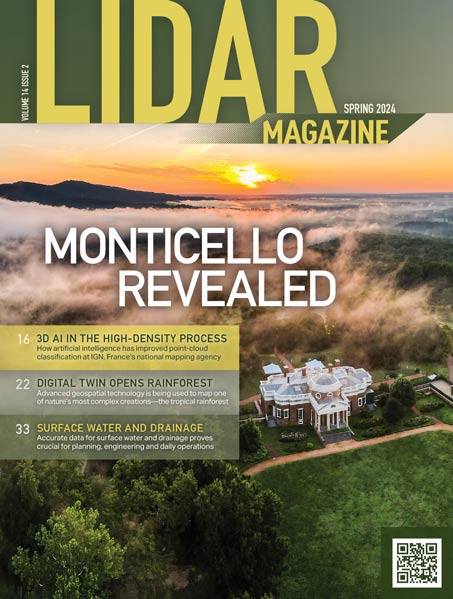ASPRS released version 1.1 of the ASPRS Lidar Data Exchange Format Standard (LAS) at its 71st Annual ASPRS Conference and Exhibition held in Baltimore, Maryland in March. This binary data exchange format is an industry standard for the exchange of lidar data between various hardware manufacturers, software developers, data providers and end users. The LAS format is primarily intended to make the exchange, manipulation, analysis, and storage of lidar data faster and easier. In addition, a standardized lidar data format helps to facilitate the processing, editing and visualization of lidar data in a wide variety of commercial and proprietary software packages. The format is a public binary file format that is a replacement for the proprietary systems or a generic ASCII file interchange system used by many companies in the past. [See The LAS 1.1 Standard by Lewis Graham in the July 2005 issue of PE&RS.]
ASPRS maintains the LAS format standard as a service to its members, lidar system manufacturers and those who acquire and process lidar data, said ASPRS President Karen Schuckman. A common, public binary data format ensures efficient storage of large, complex datasets and encourages interoperability between many photogrammetric and GIS software packages. Our goal is to allow the end-user community to explore and exploit lidar data in a wide variety of applications and to facilitate the use of lidar-derived map products in federal, state, local and private geospatial data infrastructure.
The ASPRS Lidar Committee maintains the LAS format through its LAS Working Group. The original version of the LAS format was released in May, 2003. As part of its on-going review, the LAS Working Group proposed an interim update of the standard to address several minor issues and provide clarification to the original documentation. After input was solicited from various industry stakeholders, a change document was submitted to the full committee for review and the revisions approved at its March 7th meeting.
The LAS Working Group will now focus on a full version update of LAS to V2.0. Topics to be covered in V2.0 include optimization and revision of the existing format, inclusion of additional data such as RGB values, the potential for waveform encoding, the extension to cover other diverse data formats such as manufacturers comprehensive outputs and the potential to have the LAS format cover lidar data from terrestrial (ground-based) laser scanners as well. At the request of the National Geospatial-Intelligence Agency (NGA), the Working Group will also investigate the potential to use the Advanced Authoring Format (AAF) as a wrapper for .LAS data. This would allow much easier integration and exchange of integrated data sets (lidar + something else) as well as provide other benefits to government users such as NGA. The ASPRS Lidar Committee is planning to review and release V2.0 in early 2006.
Many ASPRS member organizations, including the major industry manufacturers and software developers, have adopted the LAS format since its release in 2003. Maintenance of the LAS standard by ASPRS provides an invaluable service to ASPRS individual members, sustaining members and to the geospatial data industry at-large and it is anticipated that ASPRS continued development of this standard, along with the on-going release of ASPRS guidelines and best practices for lidar mapping, will further promote the adoption of lidar mapping by professional practitioners.
Founded in 1934, ASPRS is an international professional organization of 6,000 geospatial data professionals. ASPRS is devoted to advancing knowledge and improving understanding of the mapping sciences to promote responsible application of photogrammetry, remote sensing, geographic information systems and supporting technologies.
